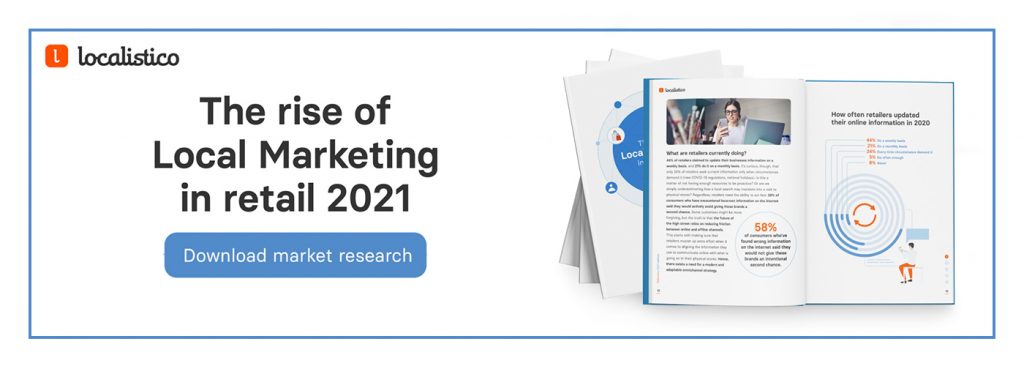Local Marketing for Retailers: 2021 Must-Knows
March 2020 brought COVID-19 and the start of quarantine in many countries. This historic moment radically transformed the daily lives of millions of people around the world and, of course, drastically impacted the global economy. The retail sector, one of the most directly affected by the pandemic, has since had to reinvent itself in order to adapt to previously alien consumer behaviours. The full and seamless integration of digital and physical has become a must in the quest to survive this global crisis.
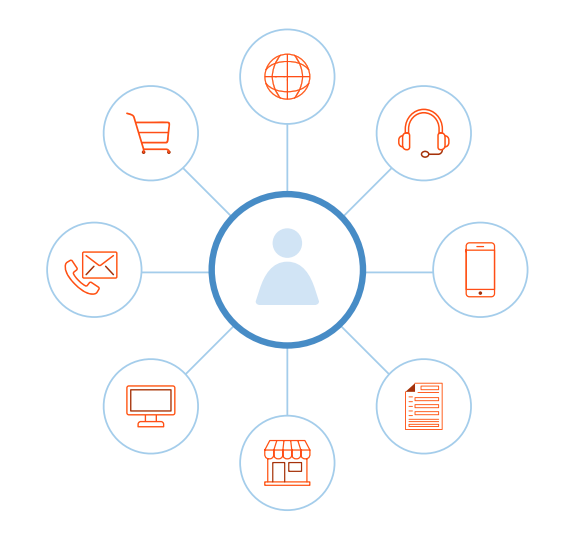
In recent months, we have seen how many brands have implemented new opening hours in order to sanitize their points of sale. We have also seen retailers accelerate the rollout of curbside pickup throughout their store network and we have witnessed countless creative ways to offer contactless and omnichannel fulfilment, among other things. But what are the main struggles that retailers are facing throughout this process? Are they able to stay up to speed when it comes to giving consumers what they want? How are they communicating with their target audience?

“Local Marketing for retailers will undoubtedly become much more important after the pandemic. People are discovering new commercial options and we are rediscovering local commerce, regardless of whether they are SMEs or large brands with locations in more urban areas. Local Marketing will bring visits and traffic to points of sale and companies at a time when organisations need, more than ever, qualified and purchase-oriented traffic”. Jacinto Llorca, International Speaker, Author and Business Consultant.
We surveyed 250 retailers and 250 consumers to answer these questions and measure the degree of alignment between the players. Let’s see what we found out!
1. It’s time to ditch the status quo
The marketing landscape has undergone a transformational shift over the past few months, pushing retailers to transition alongside it. Local Marketing strategies demand, more than ever, accurate listings data and proper management of online reputation. Brands cannot afford online-offline inconsistencies, and even though revamping strategies can be a challenge, it is imperative for those brands who want to stay relevant. We’ve seen that 62% of retailers are either managing their online presence manually or not doing it at all, which shows that more than half of retailers are significantly behind on being there for their customers in the way they need it most.
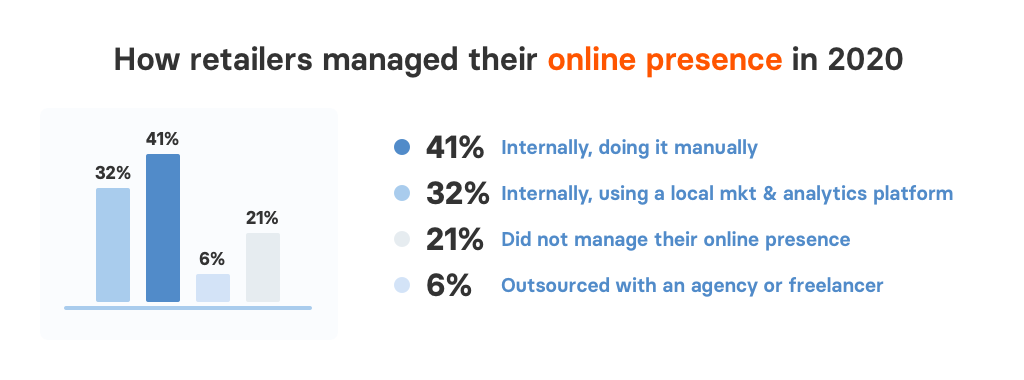
How many chances will they get before they are unseated by a competitor that provides the 360º experience? Retailers need to let go of the assumption that things will eventually go back to normal and assume that the way we behave today, as consumers, is not a temporary trend but a foundational behaviour that will only persist. That being said, it’s time for all retailers to reevaluate their marketing strategies, make sure their online presence is playing a role in their customer’s purchasing decision, and, if not, change the approach.
2. Visibility is key to winning battles
In order to achieve a sleek online presence, retailers will need to simplify the management of their locations across multiple platforms and ensure they get teams aligned to execute cohesive strategies. In parallel, it will be relevant that they capitalise on new opportunities, such as changes in consumer behaviour and in-store performance, and collect relevant insights that can become an added value in their offering. In order to do this, tracking customer activity and location engagement, as well as obtaining audience analytics will be key.

“The insights we get from our clients are the fundamental guidelines that define our strategy for each brand. And that has been the case from day one, not just now. What’s more, we have indicators that help us measure the loyalty of our online customers, based on different parameters. This information helps us to evaluate the reputation of each of our brands and to compare them with other brands in the sector. In addition, we also track and evaluate all the comments and ratings made by our customers on online channels and delivery platforms. This is very valuable information for us, which allows us to improve every day at all levels, in order to offer the best possible dining experience”. Sergio Rivas, CEO at Beer & Food.
3. Omnichannel is no longer a good to have, but a must-have
The barriers between brick-and-mortar and online commerce need to be broken down. Retailers who want to properly engage with consumers need to bring together customer data from every possible touchpoint, allowing movement across channels seamlessly, with context and their personal data following them across the whole journey. If consumers are searching for a product on their phones, there is currently nothing more targeted than serving that item with photos, an accurate description and the price of the product, while at the same time letting them know how far they are from it. Companies that fail to deliver on these expectations will get left behind.
But what does a typical consumer journey look like?
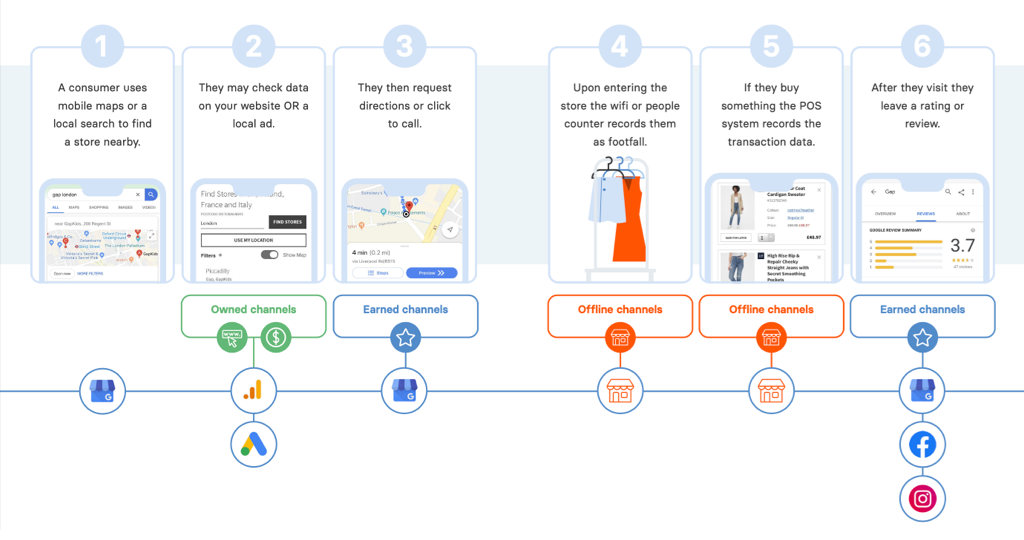
4. Friction drives away shoppers… for good
Shoppers and retailers are certainly aligned in one thing when it comes to online ordering experiences: they are not meeting expectations for either side. 55% of consumers said that the service they’d value most from brands was
a more fluid online ordering experience. Any red tape leads to an immediate indicator that there’s massive room for improvement. A seamless experience in digital channels proves to be one of the pinnacle keys to success, with ease of navigation, easy checkout and accurate product descriptions being factors that consumers weigh while navigating. Digital engagement continues to reign supreme and retailers who want to seek customer loyalty must enhance their offering to streamline the entire customer journey. As the age-old wisdom directs: keep it simple.
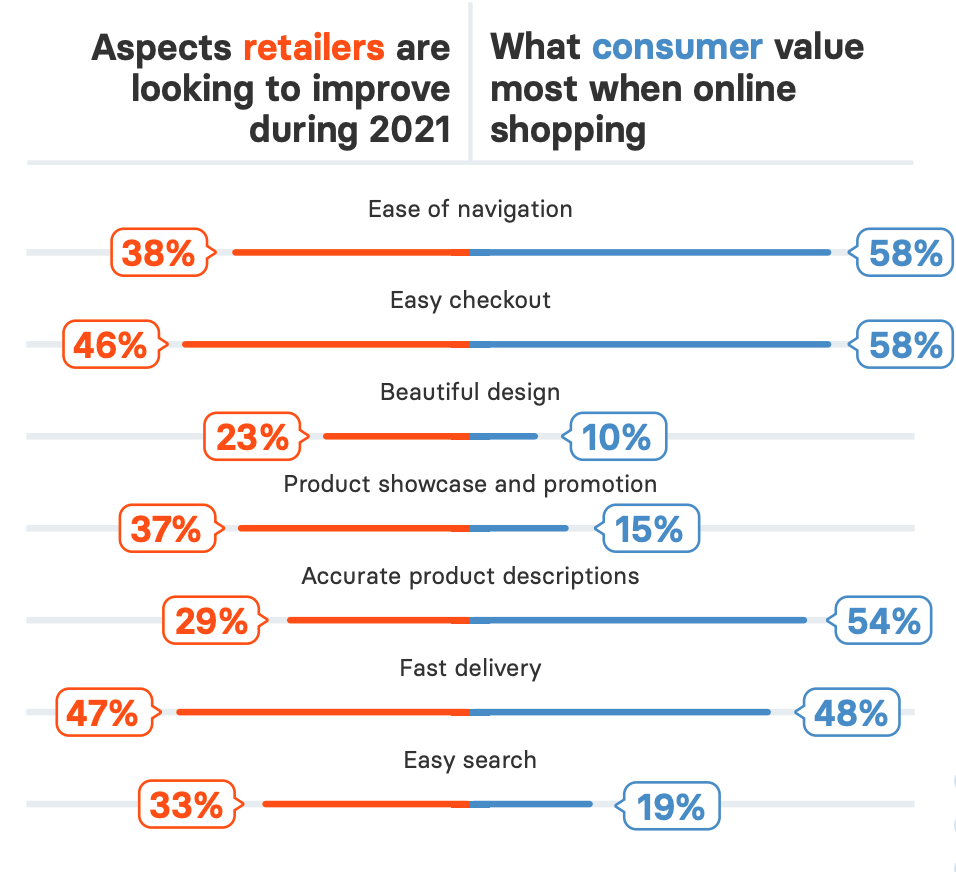
5. Real-time communication will drive sales and increase connection with customers
Real-time communication between retailers and customers will become increasingly frequent. The pandemic heightened the importance of instant messaging (Whatsapp usage increased by 40%), and 39% of retailers stated they had seen an uplift in enquiries thanks to using instant messaging services during the pandemic. Whatsapp, Telegram or Facebook Messenger, just to mention a few, will become game-changers in the way brands interact with their consumers, with 36% of consumers being more likely to buy from a business that communicated with them on their preferred channel. And this doesn’t just apply to customer support, but as marketing and sales channels as well. Throughout 2021 we will witness how real-time commerce will allow retailers to attract new online shoppers, inspire people to spend more and increase customer loyalty.

“Personalization has been a mainstay in retail innovation for most of the decade. In 2021, this trend is expected to continue as retailers take a more holistic look at customer data. Instead of using a customer’s data to send them targeted advertisements and promotions, retailers will use personalized people-based marketing insights to create simple, streamlined shopping processes. For today’s time-pressed consumers, this is a significant value-add. At a time when many people would prefer to shop online only, creating a personal experience based on customer insights can help to fill the gap that would otherwise be filled by a salesperson in-store”. Bisila Bokoko, Entrepreneur & Brand Ambassador.
